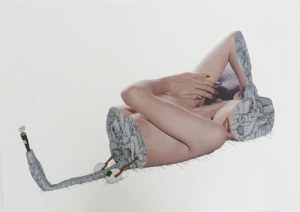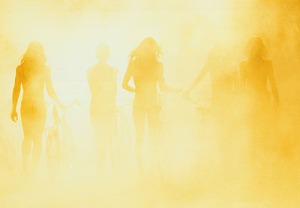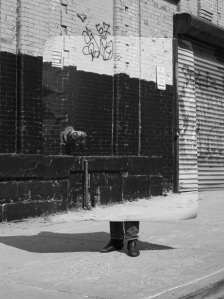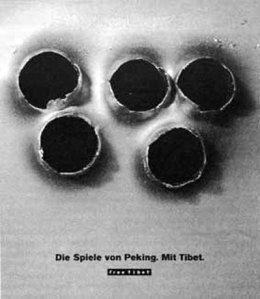P6
25/01/2010
P6 – El espacio compositivo.
This is example of closed composition in closed space. Using different media of image the artist create mixed objects.
This painting is the example of open composicion. We know that not all face is shown on the image, but we can imagine that out of the frame is the missing part.
This image is example of open composition in an unlimited compositive space. It looks a bit like pattern, like a piece, fragment of a larger whole.
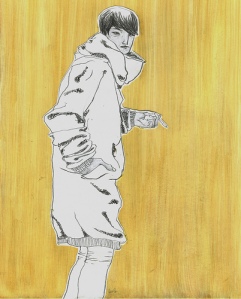 Here we can see open composition i negative compositive space. The background is darker than a person on the image, so we can have impression like it encircle her. On the other hand composition is open because we cannot see whole feet of the model, but we know she has them;)
Here we can see open composition i negative compositive space. The background is darker than a person on the image, so we can have impression like it encircle her. On the other hand composition is open because we cannot see whole feet of the model, but we know she has them;)
P5
25/01/2010
Practica 5 – Relaciones compositivas
In this picture syntactic criterion is movement. The way mans body looks like makes impression that he is actually flying.
The girls head and the mountain seem to be the same size. We have this impression only because of the distance between them. We can observe something like repetition too. Transformating three-dimensional world in two-dimensional photography we can make this kind of ilusions. El equilibrio
El equilibrio
The visual balance is the strongest factor when we are talking about perceiving an image and this drawing is great example of horizontal equilibrium. Fighting bears are placed on exactly two different halfs of the page, I can even say they look like mirrors reflections.
The most characteristic in this image is modulation. We can see image divided into parts which are repeated, only 5 coloures are used.
This picture is example of the tension. It’s title is ‘Cat’s eye at night’ and when we look at it our eyes automaticlly concenrate at yellow eye.
P4
23/01/2010
Práctica 4 – La forma en el espacio.
This picture of Jan Dunning is an example of escorzo. Point of view makes the head of the pigeon huge, so we can see small street on the second plan.
Second picture is an example of escorzo as well. It’s pinhole photography of Jan Dunning again. We can see all body of the person, where the head seems to be bigger that is in fact. It’s because the point of takieng picture.
The example of traslapo shows a girl on the first plan. It shows superposition of independent elements which make composition. Because of that we know it’s treedimensional space.
traslapo Cindy Sherman
And example of proyección. Photograph of Jeremy O’Sullivan shows just shreds, but they can say more than real objects, real bodies.
P3
23/01/2010
P3 – La forma
1. Conceptos tangibles
 This image represents piece of pasta. Author using just few simple lines made it recognizable.
This image represents piece of pasta. Author using just few simple lines made it recognizable.
Using just 5 lines and one dot the image shows a eye.
 this image represents a chair.
this image represents a chair.
2. Conceptos intangibles
 Doubts, this is what is this drawing about. It’s in the face of the man
Doubts, this is what is this drawing about. It’s in the face of the man
3. Verbo
 This umage using just black show playing children. We see proportion of their bodies, so we can state they are not adults, it seems they are moving, probably they are dacing.
This umage using just black show playing children. We see proportion of their bodies, so we can state they are not adults, it seems they are moving, probably they are dacing.
P2
19/01/2010
P1
26/11/2009
Practica 1 – La Percepcion
1. Principio de agrupamiento – principio de complementariedad
“Un printemps à New York” is a serie of pictures made by french photographer Fred Lebain. This is just one of them, but they all are great examples of principle of complementarity (principio of complementariedad). The artist uses huge prints of pictures taken before, on which is part of the reality he wants to photograph. Then he simply covers it, playing “real or fake”; like in this example where the shadow on the ground and legs sticking out
2. Principio del espacio – superposición
This picture taken by Zhou Mi is the example of
3. Principio de agrupamiento – ley de la proximidad
4. Principio de reconocimiento – determinación de figura y fondo
5. Principio de reconocimiento – ley de la continuidad

